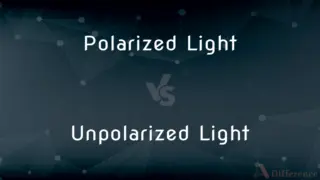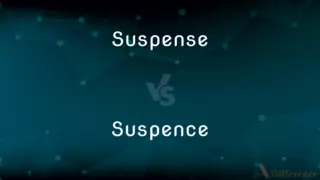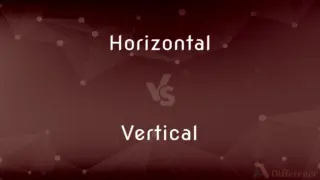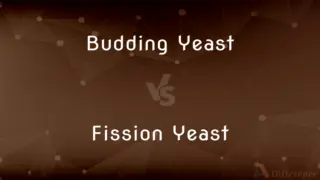Coprecipitation vs. Postprecipitation — What's the Difference?
Edited by Tayyaba Rehman — By Fiza Rafique — Published on October 17, 2023
Coprecipitation refers to the simultaneous precipitation of multiple substances, while Postprecipitation occurs after the primary substance has precipitated, affecting substances that remain in the solution.
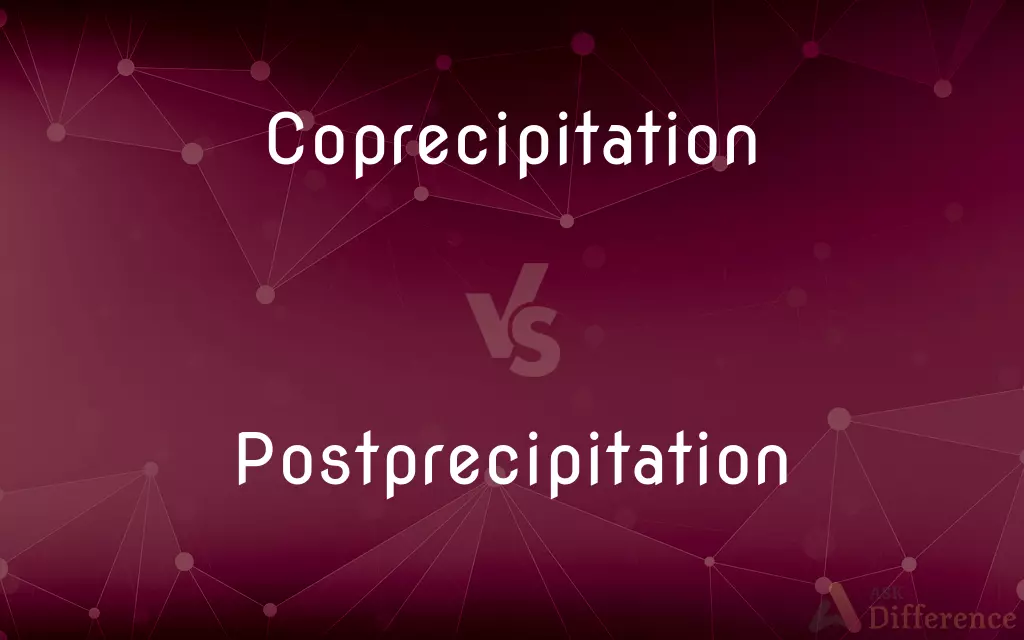
Difference Between Coprecipitation and Postprecipitation
Table of Contents
ADVERTISEMENT
Key Differences
In essence, Coprecipitation deals with the concomitant precipitation of substances, while Postprecipitation concerns the sequential precipitation of substances after an initial event.
Fiza Rafique
Oct 17, 2023
Coprecipitation and Postprecipitation are terms describing the sequence and relationship of substances during a precipitation event. Coprecipitation is when multiple substances precipitate together from a solution simultaneously. In contrast, Postprecipitation refers to the secondary precipitation of substances after the primary substance has already separated from the solution.
Fiza Rafique
Oct 17, 2023
The phenomenon of Coprecipitation often arises when one substance facilitates the precipitation of another, either because of similar crystalline structures or because they are trapped within the precipitating phase. On the other hand, Postprecipitation occurs when the conditions change post the primary precipitation, leading to the precipitation of the remaining substances.
Fiza Rafique
Oct 17, 2023
One can observe Coprecipitation in scenarios where impurities in a sample are dragged down during the precipitation of the primary substance. With Postprecipitation, it is usually subsequent to changes in concentration, temperature, or pH, which instigates the secondary substances to precipitate.
Fiza Rafique
Oct 17, 2023
In laboratory settings, Coprecipitation can be both an advantage and a challenge. While it's beneficial for concentrating or purifying samples, it can also lead to contamination. Postprecipitation is typically viewed as an unwanted occurrence because it can affect the purity and yield of the primary substance collected.
Fiza Rafique
Oct 17, 2023
ADVERTISEMENT
Comparison Chart
Cause
Similar crystalline structures or trapping
Changes in conditions (e.g., concentration, pH)
Fiza Rafique
Oct 17, 2023
Lab Implication
Can aid in purification or lead to contamination
Often viewed as unwanted, affects purity
Fiza Rafique
Oct 17, 2023
Example
Impurities precipitating with main substance
Secondary substances precipitating after main substance is removed
Fiza Rafique
Oct 17, 2023
ADVERTISEMENT
Definitions
Coprecipitation
A method for concentrating or purifying samples.
They utilized Coprecipitation to enhance the sample's concentration.
Fiza Rafique
Sep 27, 2023
Postprecipitation
A secondary and subsequent event.
They did not account for Postprecipitation, affecting the final yield.
Fiza Rafique
Sep 27, 2023
Coprecipitation
Involves substances precipitating together.
The two compounds underwent Coprecipitation, making separation challenging.
Fiza Rafique
Sep 27, 2023
Postprecipitation
Results from changing conditions.
A shift in pH led to the Postprecipitation of the compound.
Fiza Rafique
Sep 27, 2023
Coprecipitation
The simultaneous precipitation of multiple substances.
During the reaction, Coprecipitation of both metals was observed.
Fiza Rafique
Sep 27, 2023
Postprecipitation
Affects substances remaining in solution.
The Postprecipitation phenomenon meant more substances settled than expected.
Fiza Rafique
Sep 27, 2023
Coprecipitation
Arises from similar crystalline structures or trapping.
The Coprecipitation of the impurity was due to its similar crystalline nature.
Fiza Rafique
Sep 27, 2023
Postprecipitation
Typically unwanted in lab scenarios.
They took measures to prevent Postprecipitation and maintain sample purity.
Fiza Rafique
Sep 27, 2023
Coprecipitation
Can lead to contamination in certain settings.
The unwanted Coprecipitation introduced impurities into the sample.
Fiza Rafique
Sep 27, 2023
Postprecipitation
Occurs after primary precipitation.
After collecting the main product, Postprecipitation of the residue was noted.
Fiza Rafique
Sep 27, 2023
Coprecipitation
In chemistry, coprecipitation (CPT) or co-precipitation is the carrying down by a precipitate of substances normally soluble under the conditions employed. Analogously, in medicine, coprecipitation is specifically the precipitation of an unbound "antigen along with an antigen-antibody complex".Coprecipitation is an important topic in chemical analysis, where it can be undesirable, but can also be usefully exploited.
Fiza Rafique
Jan 30, 2023
Postprecipitation
(chemistry) The precipitation of a second (often related) substance upon the surface of an initial precipitate
Fiza Rafique
Jan 30, 2023
Coprecipitation
(chemistry) The precipitation of an otherwise soluble substance through the precipitation of another substance.
Fiza Rafique
Jan 30, 2023
FAQs
Can Coprecipitation lead to impurities in a sample?
Yes, if undesired substances precipitate simultaneously with the primary substance.
Fiza Rafique
Oct 17, 2023
Is Coprecipitation always unwanted in a lab setting?
Not always. It can be used purposefully for concentrating or purifying samples but can also lead to contamination.
Fiza Rafique
Oct 17, 2023
What can trigger Postprecipitation?
Changes in conditions like concentration, temperature, or pH can instigate Postprecipitation.
Fiza Rafique
Oct 17, 2023
What is Coprecipitation?
Coprecipitation involves the simultaneous precipitation of multiple substances from a solution.
Fiza Rafique
Oct 17, 2023
Can Postprecipitation affect the yield of a reaction?
Yes, it can impact the yield and purity of the primary substance collected.
Fiza Rafique
Oct 17, 2023
Is Postprecipitation common in all precipitation reactions?
No, it depends on the specific reaction conditions and substances involved.
Fiza Rafique
Oct 17, 2023
Why might Coprecipitation be used purposefully?
To concentrate or purify specific substances or to study interactions between compounds.
Fiza Rafique
Oct 17, 2023
How can one prevent unwanted Coprecipitation?
By optimizing reaction conditions and using high-quality reagents.
Fiza Rafique
Oct 17, 2023
How does Postprecipitation differ from Coprecipitation?
Postprecipitation is a secondary precipitation event occurring after the primary substance has already precipitated.
Fiza Rafique
Oct 17, 2023
Author Spotlight

Written by
Fiza RafiqueFiza Rafique is a skilled content editor at AskDifference.com, where she meticulously refines and enhances written pieces. Drawing from her vast editorial expertise, Fiza ensures clarity, accuracy, and precision in every article. Passionate about language, she continually seeks to elevate the quality of content for readers worldwide.

Edited by
Tayyaba RehmanTayyaba Rehman is a distinguished writer, currently serving as a primary contributor to askdifference.com. As a researcher in semantics and etymology, Tayyaba's passion for the complexity of languages and their distinctions has found a perfect home on the platform. Tayyaba delves into the intricacies of language, distinguishing between commonly confused words and phrases, thereby providing clarity for readers worldwide.

